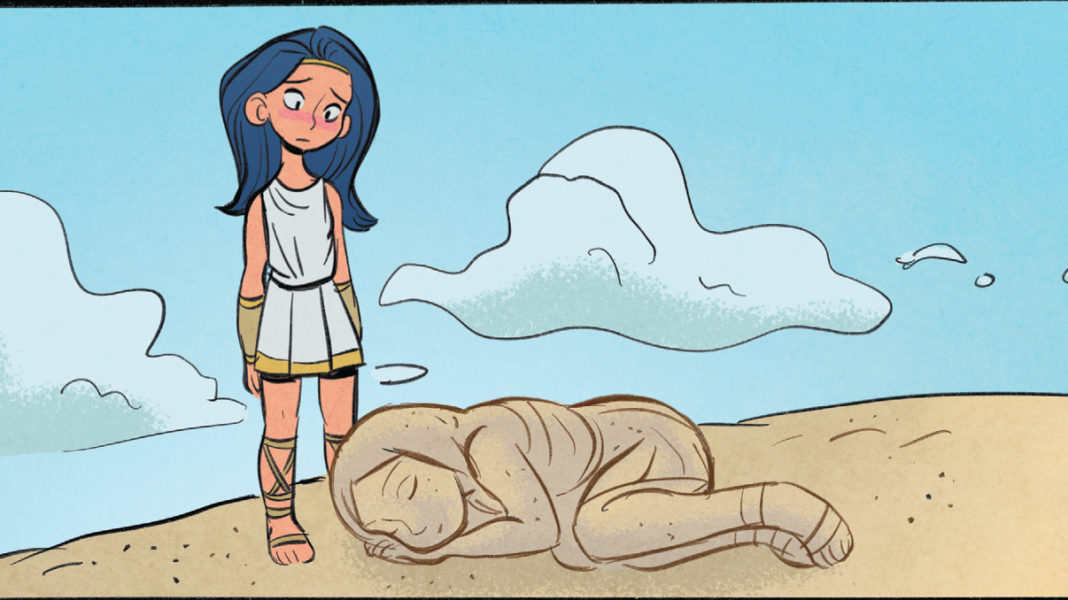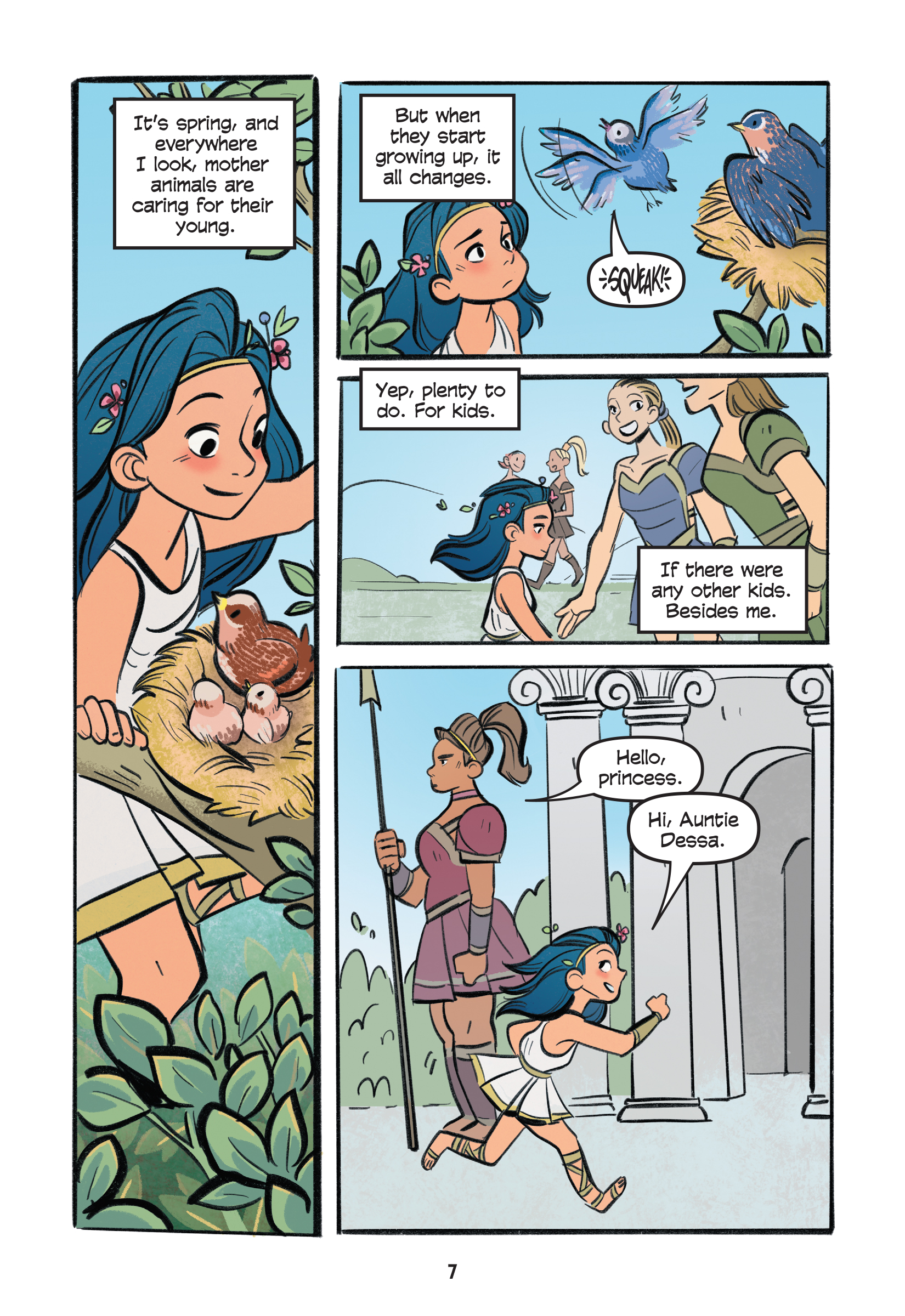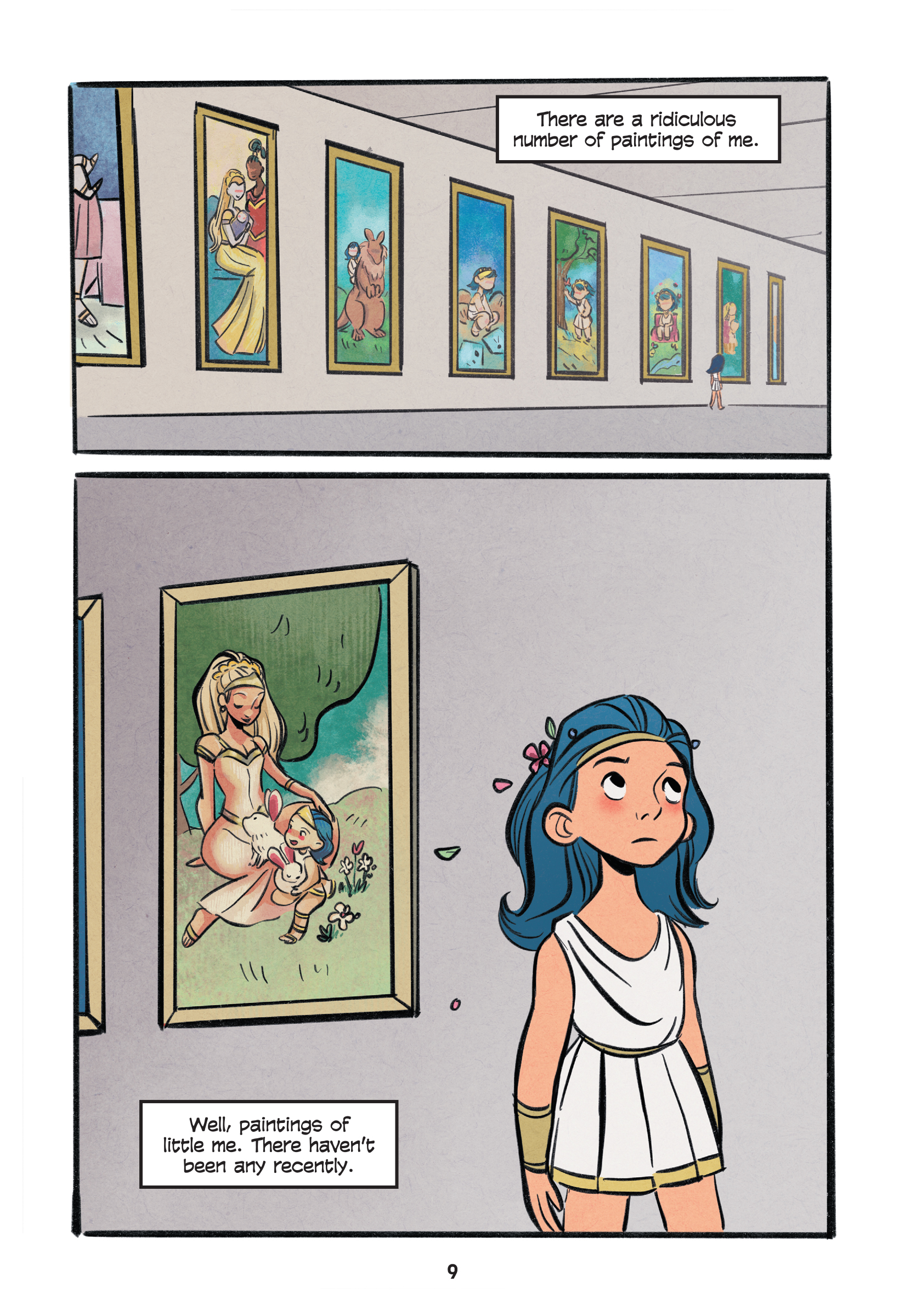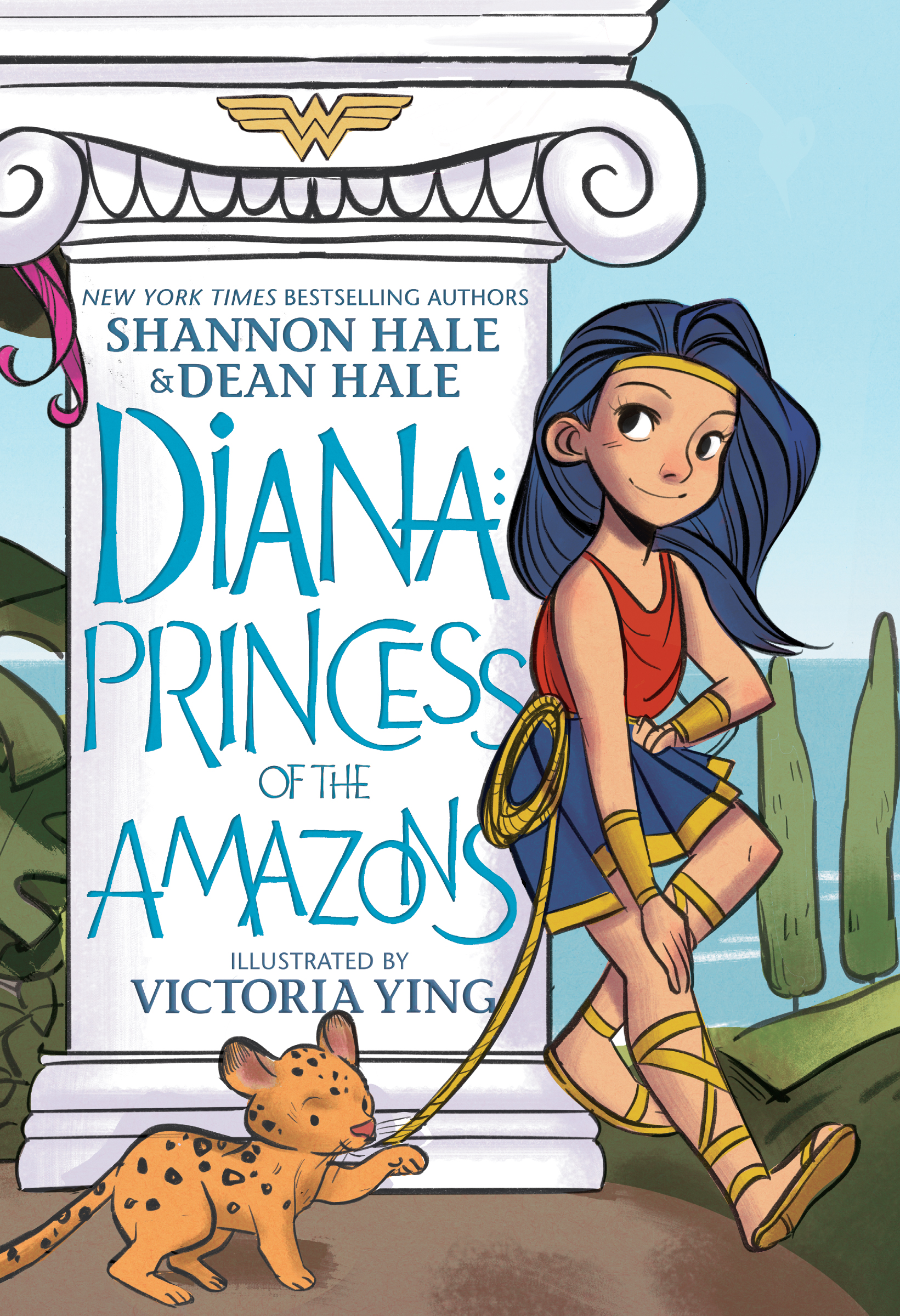What was Wonder Woman like as a kid? Spirited, certainly, and brave. Determined. Capable. But aside from a brief glimpse at her childhood in the 2017 movie directed by Patty Jenkins, we don’t see too much young Diana, especially in comics — until now. Written by Shannon and Dean Hale and illustrated by Victoria Ying, the new kids’ graphic novel Diana: Princess of the Amazons explores the titular character’s life as an 11 year-old living on Themyscira from her perspective, and it’s a delightful read from cover to cover.
Here’s the full synopsis:
Cut off from the rest of the world, Diana had an idyllic childhood on Themyscira. But now 11-years-old, she’s beginning to feel more and more isolated. Though she has many “aunties” and a loving mother, she is an only child. THE only child, in fact.
After an escapade goes wrong, Queen Hippolyta chastises Diana for not living up to the Amazon standard. Diana just can’t seem to measure up, no matter what she does! Literally every other person on the island is an adult proficient in their trade and mighty in body, while she is gangly, sometimes clumsy, and not particularly proficient in anything. She’s not Wonder Woman yet. What Diana needs is a friend; someone her own age whom she can talk to. But when she decides to take matters into her own hands—she may just make a monster instead.
Ahead of Diana: Princess of the Amazon‘s release, The Beat hopped on the phone with the creative team to talk about their process for creating the story, what it meant to write and illustrate a young Diana, and why this is a “golden age” for kids’ comics.
Samantha Puc: How did you go about adapting the Diana that we all know as Wonder Woman, and exploring her childhood and who she was before she became this epic hero?
Shannon Hale: For me as a storyteller, one of the main reasons why, if there was any character I wanted to write as their younger version, it was Wonder Woman. I was so fascinated with the idea of, “What if you were the only kid in your world and everyone else was an adult? What would that be like?” I hadn’t seen that explored a lot with Wonder Woman, and I knew as a kid I would have loved that idea. Since we were really wanting to introduce Wonder Woman to a lot of younger readers, it seemed like a great place to start.
Not only is she the only kid in her world, but everyone else is this perfect, immortal, amazing warrior. How difficult would that be, to have all those aunties looking after you? You can’t hide in a place like that. Everybody knows who you are; everybody notices what you do. You’re going to get in trouble for everything you do and everything’s going to get back to your mom, the queen. It’s so hard to be free and to explore and have a chance and make mistakes as a kid. So that’s where, for me, I was interested in starting.
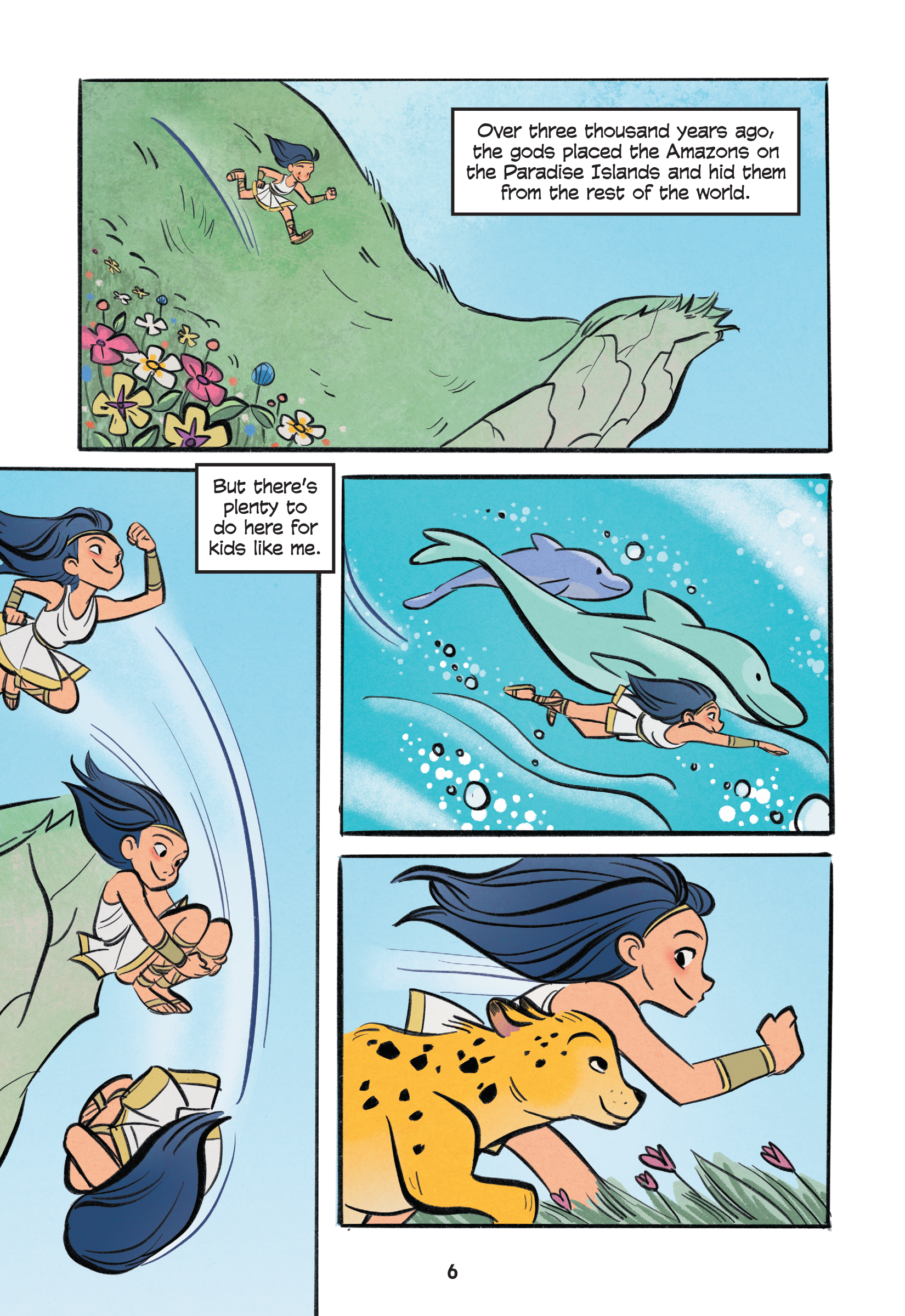
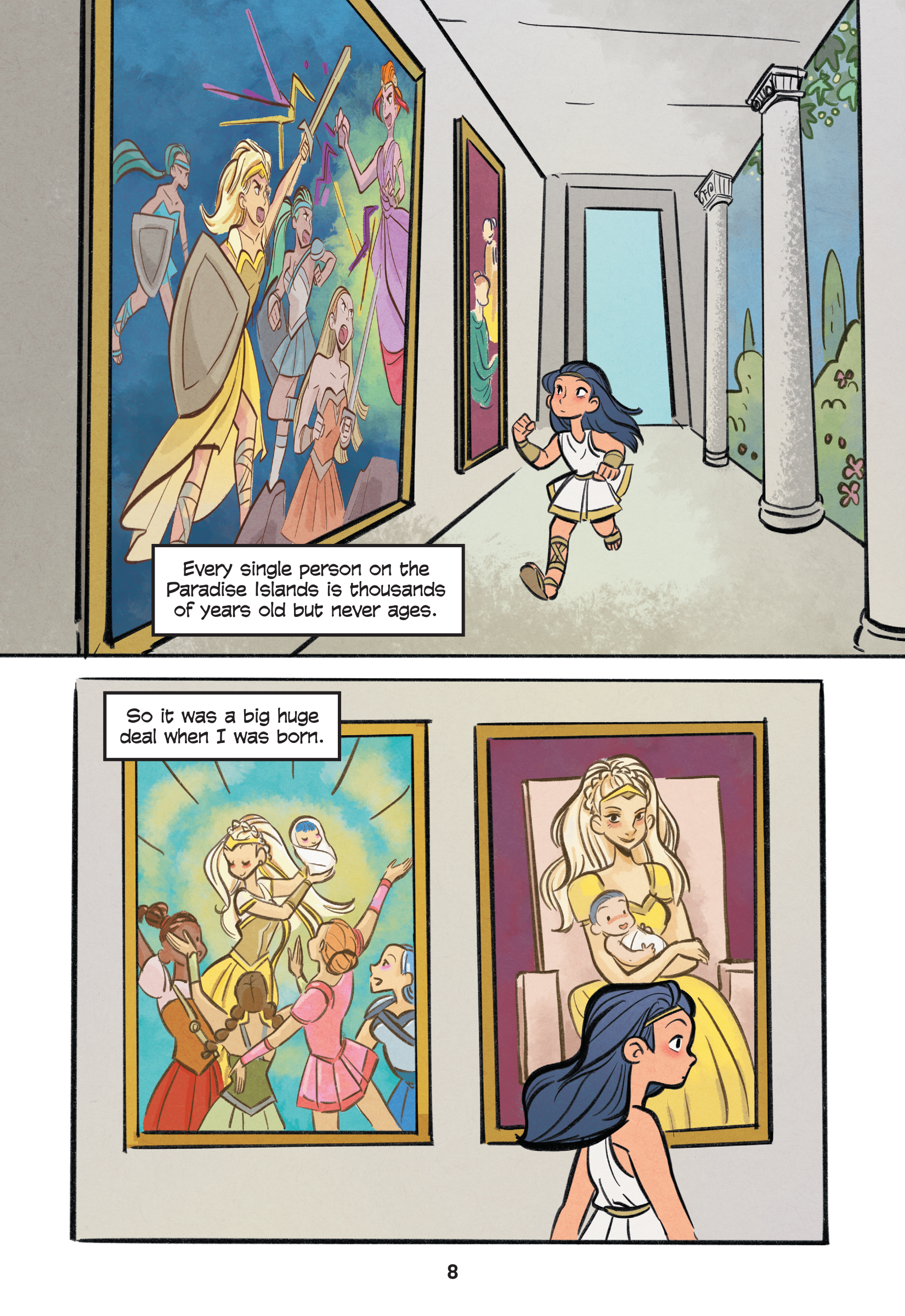
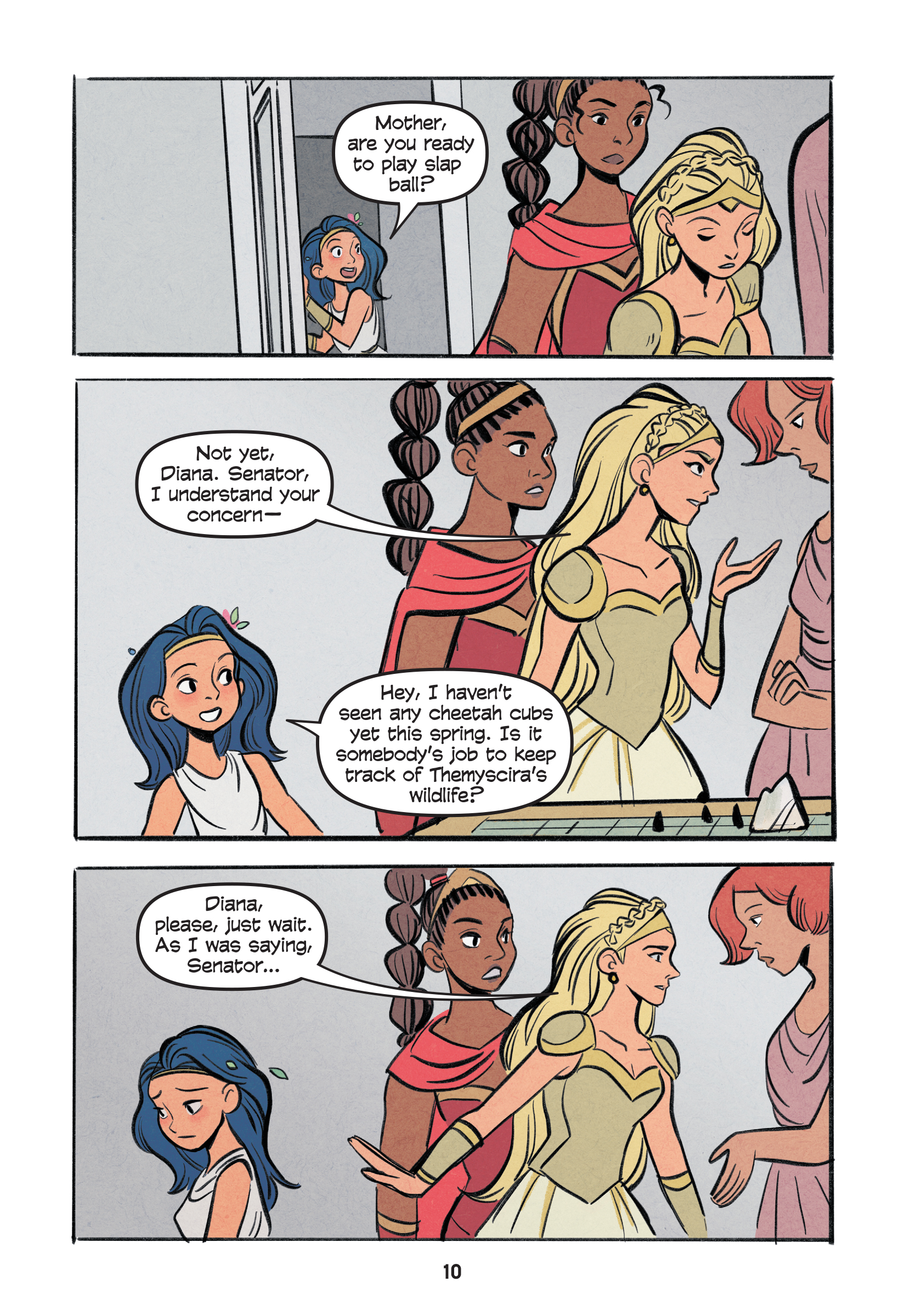
Puc: In terms of the art, Victoria, what was it like to get to channel a younger, more kid-friendly version of Themyscira and Diana and her world?
Victoria Ying: Thinking about Diana and thinking about comics — I started reading comics at about the age that Diana is [in Princess of the Amazons], around age 11. I remember the stuff that I liked and I remember, there was always kind of a bold simplicity to it. That’s what I was really after. I wanted to try to make this a book where the characters were expressive and you could very much see what was happening, but at the same time I tried to keep it on the simpler side and make sure the most important thing — the story — was reading as clearly as possible.
Puc: Shannon, you spoke to this a little bit and so did you, Victoria, but what is the importance of directing a book like this toward younger readers? Why is it important to get young readers into comics?
Hale: Boy, I could talk for an hour about this. I’ve been in the children’s book world for about 18 years and I meet a lot of young readers. When I started out, there were no graphic novels being published with young protagonists. A lot of kids didn’t have access to comics in comic book shops and libraries, so there were so many kids that I met that I knew would have so benefited [from comics] — whether because they were visual learners or for other reasons really thrived with visual storytelling — and they didn’t have them.
Dean and I wrote one of the first graphic novels ever published by a children’s publisher (Rapunzel’s Revenge, Bloomsbury, 2008) because we could see there was such a need for more of this kind of storytelling for kids. This is really a golden age right now of comics for kids, with the big comics publishers as well as children’s book publishers publishing more books that are about younger protagonists. You talk to any children’s librarian or teacher or a lot of parents, and they’ll tell you, kids that never thought of themselves as readers are thriving now because they have so much access to so many great graphic novels.
Beyond just the format itself being huge in helping kids’ literacy and just enjoying reading, I personally am just an enormous fan of Wonder Woman. When I went around talking to kids, I couldn’t believe how many kids had never heard of Wonder Woman before. I do dozens of school assemblies every year and I talk to thousands of kids, and frequently I was at schools and not a single kid had ever heard of Wonder Woman. That, for me, is shocking. I was like, “I need to fix this. I personally take this mantle upon my shoulders.” The film absolutely helped, but to get a book about young Wonder Woman into kids’ hands feels like, “Yay! We’re going to create a next generation of Wonder Woman fans.”
Dean Hale: Talking about the film: I’ve been a huge Wonder Woman fan forever, but seeing that section of the film with young Diana was just like, “Oh. I want to watch a whole movie about this.” That girl was so cool. As a kid, that was who I wanted my friend to be.
Ying: I love writing for this age range. There’s such a hunger for graphic novels and reading in general. Kids at this age are just starting to discover their own fantasy worlds, where it’s not just something someone gave them, it’s something they can actually experience on their own, which is really cool. I love drawing for kids because they engage so quickly with the medium. Like Shannon said, it’s totally a golden age for young readers and graphic novels. It’s super exciting that DC is getting in on it and using these iconic characters to bring more readers in.
When I was a kid, I would go to comic book stores and my favorite comics were always Archie Comics or Sonic the Hedgehog comics, so it’s really cool to see not just those, but these strong female characters who are so in our zeitgeist but presented in a way that kids can relate to.
Puc: In terms of the creative process, obviously none of you are new to serialized art or graphic stories, but was there a lot of collaboration between the three of you from the get-go for how you wanted the book to look and feel, and how you wanted the story to flow?
Dean: It was a lot of collaboration between Shannon and I.
Hale: Obviously we wrote the script together. The script was done before we met Victoria, but one thing I love about DC is how, as soon as Victoria came on board, all the emails were all of us. Our editor, Victoria, me, and Dean, were all cc’ed on every email so that it really did feel like a group project rather than, we do our part off in this corner and Victoria does her part off in that corner. We instantly loved everything Victoria did, so I don’t recall that we made a lot of art notes or anything, beyond what we wrote in the script. Did we, Victoria?
Ying: No, not really. Most of the time, you guys were like, “This is great!” The few art notes that you did have were always really good and very story-driven, which I think is the best way to do it. Sometimes I work with authors who are not familiar with working with illustrators and kind of trusting them, but with you guys, anytime you guys had an art note, it was based in, “Is this clear? Is this the story that we’re trying to tell?” as opposed to aesthetics or anything like that. It was super helpful for me, because it was like, “OK. Everyone is in this together. We’re all trying to make the best story that we can, and we’ll bring the skills that we have to the table.”
Hale: Yeah, totally. I really feel like that’s the writer’s place. I don’t feel like it’s the writer’s place to design and create the aesthetic and micromanage that. I feel like it’s to oversee the story and make sure of the clarity and if this moment is going to affect a later moment and make it clearer and more resonant, then let’s deal with that here. But also it was very easy to do, because Victoria is just so fabulous, so what could we have possibly said to improve?
Ying: Thanks!
Puc: Without giving away too much, how did you approach the elements of this plot where Diana really has to deal with the consequences of her actions, which at first don’t seem to be super high stakes but then definitely are?
Hale: One thought I had as we decided to deal with that particular plot point was, we have four kids. When I’m thinking about a world where there’s a single kid and all these adults, I often think about how adults have this tendency naturally to not allow kids to make mistakes. They try to either protect kids from making mistakes or overreact to every little mistake, and it’s easy to forget that kids are kids! They are going to make mistakes and they need to be able to in order to grow, but how much moreso when you’re the only kid on the whole island? The idea of allowing Diana — someone who’s been so protected in many ways — to jump in and do something really big and make a big mistake and be able to see consequences of her actions, and then have the chance to step in as a hero and make things better… That was an exciting idea for me.
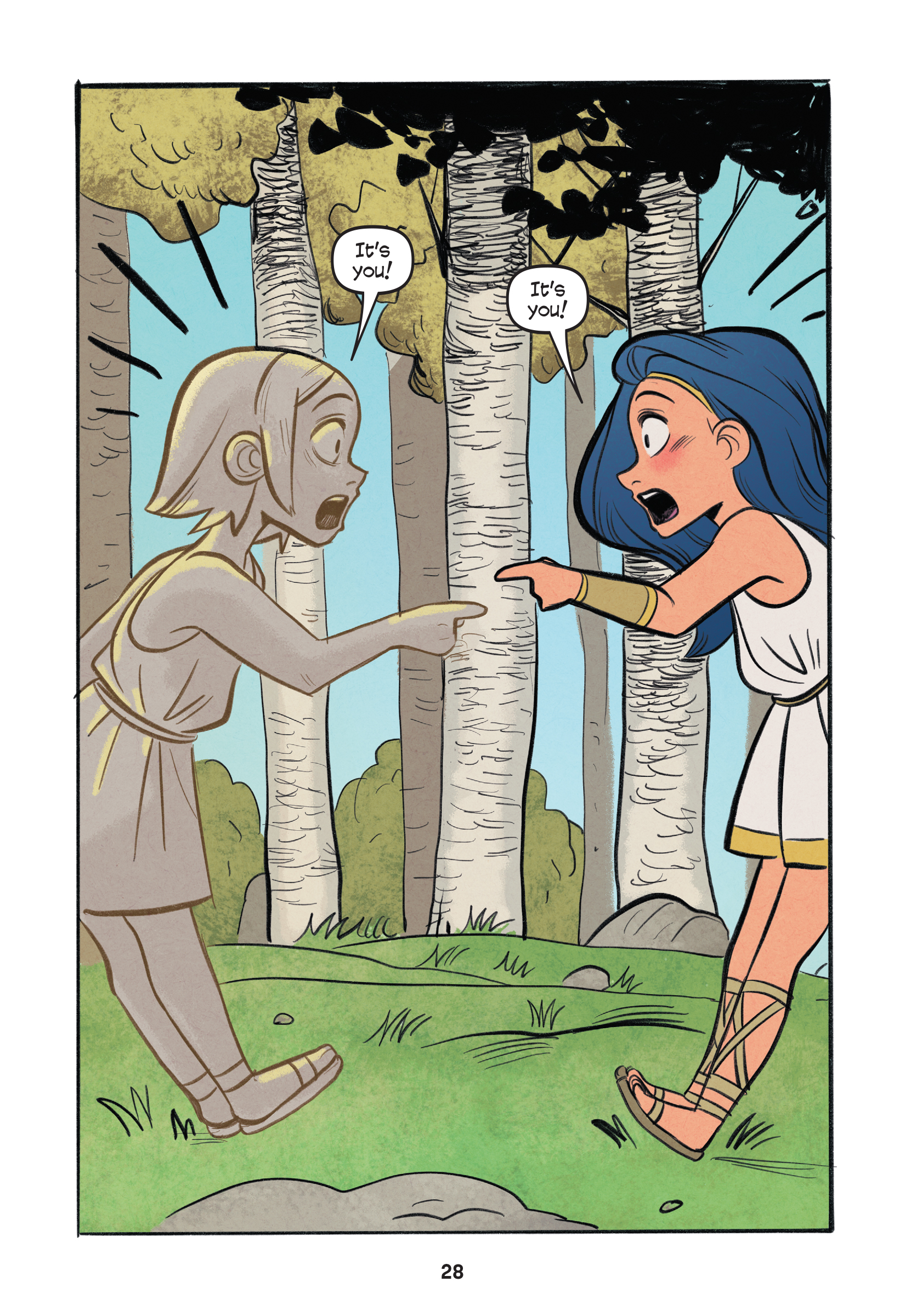
Puc: How did the character design play into that?
Ying: Originally, when it was pitched to me, it was going to be that she made a version of herself, that she looked just like Diana. I played with that a little, but then I felt like, when the twist happened, it was important that visually, the clay girl and Diana would feel related. Design-wise, you could look at them and know that they’re the same person, without it being a really clear 1:1 from Diana.
Puc: Do any of you have a favorite panel, page, or moment in Diana: Princess of the Amazons?
Ying: I really do. My favorite moment is actually when Diana and Mona have their heart-to-heart on the mountain and they’re just sharing their feelings. It’s a very small moment. It’s not anything action-y; it’s just two people talking, but being able to really lean into that very sincere emotion in the characters and their faces and expressions, and illustrate that feeling of intimacy between two girls… That was something that was really special to me and kind of remains one of my favorite scenes.
Hale: I love that, too.
Dean: I love almost any of the scenes where I see the Amazons being Amazons. It’s so cool. Even if you don’t know their names, just — when they come out on the boats and they’re fighting the giant monsters, I just think it’s so cool.
Hale: I do love the sea monster pulling down the boat. That’s great. I also love — there’s a moment where Diana has faked being hurt, and her mother comes and picks her up to carry her to the healing pools. Diana puts her arms around her neck and her eyes are closed and it’s just this moment of… There’s no words, but you just know this is really what she wants. I think so many kids, as they start to get bigger, they don’t feel like their parents’ little babies anymore, their sweet, precious things anymore. They feel like they’re annoyances. So it’s just a very tender moment; she just wants to be loved like everybody else.
Puc: We have just a couple minutes left, so what else are y’all working on currently? Is there anything else planned in this world?
Hale: We would love to do another Diana book! Currently, Dean and I are writing an Amethyst, Princess of Gemworld graphic novel, aimed at kids in the 8-12 age bracket. It’s really fun. We’ve wanted to do that character for 20 years, so it feels like we got to rub a magic lamp or something. “Yes, you get to write Wonder Woman and now you get to write Amethyst!” It’s pretty cool.
Ying: I’d love to do more Diana books. I love the world and I love drawing the character. I think it’s the way that Shannon and Dean can really tap into what it’s like to be a kid. It’s crazy! It’s so magical, the way that I remember having the feelings even though those things didn’t happen to me. I love that and I think it’s so cool.
In terms of other projects, I have an authored graphic novel coming out in July 2020 called City of Secrets, from Penguin Viking.
Diana: Princess of the Amazons is currently available everywhere books are sold. To keep up with Shannon Hale, Dean Hale, and Victoria Ying, follow them on Twitter @haleshannon, @halespawn, and @victoriaying, respectively.


